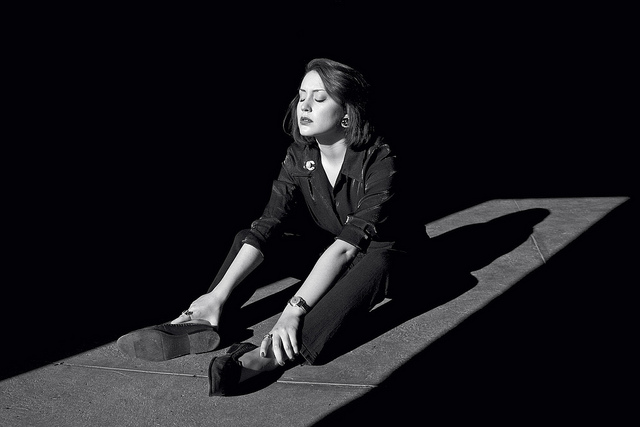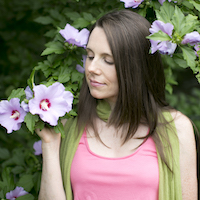For years, when I felt mentally or emotionally dirty, I sought out physical release.
I went to my yoga mat, and I twisted and stretched my body to wring out the toxins.
I ran for miles until beads of sweat covered my bare, freckly skin.
I danced and spun until my feet hurt.
But the relief I felt from the physical activity was temporary. The dirtiness always came back. If I was still Catholic (that’s another story), I’d have gone to confession about five times a day.
The dirtiness I write of—it’s not all graspable stuff. It’s fleeting thoughts. It’s heavy feelings. It’s physical tightness or tension that is connected to chronic stress. The “dirt” is the heavy soil this life is made of. It’s the deep, dark depths of things of the past. It’s the unspoken hurts. It’s the words that have marred.
The dirtiness, it’s more of a feeling. It’s an energy overload. It’s an emotional storm.
Something has shifted in me recently—or shall I humbly say, continues to shift, as the process of evolution is constant. Growth is our natural state.
The shift has somehow been a transfer of my time on the mat yoga (and my mindfulness practice) into my everyday life.
Mindfulness would have us be present with whatever arises—in a state of curiosity, like the open presence of a young child. I teach yin yoga—and in class, I often share yin philosophy while students are holding poses for three to seven minutes.
There they are, breathing in deep opening asanas, like pigeon or happy baby. In the space of holding a pose for a lengthy period, the connective tissue starts to talk. And by talk, I mean sensation builds to a point of slight to not so slight discomfort. Often, I instruct students to go back to the breath and let the breath ride the wave of sensations undulating throughout their system. As they breathe, something opens. Somethings shifts.
Often, when sensations become intense, our fight-or-flight response gets triggered—and the sympathetic nervous system, which yoga is meant to turn off, gets turned on high. In yin, this is a sign of deep connective tissue release—and as long as it’s not painful for the student, it is a good thing.
Just notice that inner movie of self as things intensify. Ride the waves with your breath.
And as I cue 10 more breaths in a pose (about a minute, once the breath has slowed down), students soften a bit.
Just stay with yourself. If you’re noticing sensation—if you’re watching your thoughts and feeling your emotions in the moment, then you’re with yourself. There’s nowhere else you need to be. Just here. Right now. Breathing and being in this shape your body has taken.
The shape of pain.
When we suffer, we take a shape. It might not be a pretty yoga asana, but it’s a form that is solid. We might walk with tight hamstrings and a sore lower back. We might sit with a clenched jaw and slumped shoulders. Yoga asana can release the strains of the body, but it also affects the mind and the heart—clearing a channel of connection between them and releasing the burdens they may all share.
When we are in emotional pain, just as when we are in an uncomfortable yoga pose, our fight-or-flight response gets triggered, and we often have a desire to just get out of it. In those moments, the suggestion “stay with yourself” may seem cruel. And yet, just like in those deep hip openers, staying with your pain and your discomfort is the greatest gift you can give yourself.
If I had to rank my top three least favorite emotions, they would be—from worst to least worst—insecurity, grief, and anger. If I could wave a magic wand and get rid of these emotions, would I? Why yes, it’s a magic wand, after all!
Gulp…but, I can’t. And because I can’t, I have to pay a visit to that well of courage I have inside of me. I have to bring it a pot of its favorite tea and make sure it’s with me for the long haul.
These emotions obviously have a purpose. They take me back to my mat. They push me to go outside more and walk, or run, or hike. They sometimes make me sit, breathe, and let them ride through.
When I practice yin yoga or meditation, I always reach an edge—that place where I have sat long enough on my cushion and my mind starts to shift and open; that place where I’ve placed my body in a position on the mat that goes from enough to expansion, opening, depth. There I am, just breathing and noticing while all parts of myself are singing different songs. As I watch them, I see they start to come into harmony; their randomness suddenly becomes symphonic.
We all have emotions that scare us, right? And if you say no—think harder. Feel deeper. Emotions are at the root of everything. They are the seeds that thoughts flower from. They are the fuel that energizes bodily sensations. It’s true when they say our emotions get stored in our bodies.
The question that I’ve asked for years: How do we release them?
Mindfulness would say that it’s not about the release, but it’s about just being present with it. Don’t focus on what you want, focus on what is here and now. That’s the gift. And if you don’t label it as good or bad—if you just stay curious—then you can watch it transform.
Stay present with yourself—all of you.
There is no ugly. There is no blissful.
There is just is-ness.
There is just breath.
There is just me writing, and you reading.
There is.
A mindfulness meditation for when we’re in the muck.
Yoga, meditation, mindfulness—they all take us to that place of neutrality, where nothing is preferred over anything else. They remind us to accept, to enjoy, and to savor. But, there are times when we feel completely sucked into the mucky, muddy waters of ego. There are times when our pain and suffering are louder than anything else. At times like this, we are called to practice.
Here is a yin practice turned into an everyday meditation:
My friend (say this to yourself in the third person), I’m sorry you are feeling so heavy, so burdened, so down.
My friend, I’m going to sit here with you and just watch you breathe. I’m going to observe, as you feel where your breath is going.
My friend, I’m going to hold your hand as you go into your body and ride the waves of sensation as they ebb and flow. I’m going to be by your side as you feel the undulation of emotion as it comes and it goes like the tide.
My friend, I’m going to place my hands at your back as you watch your heart and breathe with it.
Dearest, I’m going to kiss your forehead as you breathe with the movie of your mind. I’m here with you as you watch your thoughts as they roll through like a strip of film. I’m here, smiling with you. Aren’t they all something? So many words, and so fast.
My love, come back to your breath. Close your eyes and take in a deep one. Then hold it. Release when you’re ready, nice and slow and soft. Do it again—come on now, deep, long, slow breath in. Holding at the top and then gently let it go.
Maybe one more of those long, slow breaths? Why not.
And now, take it all in. The body. The heart. The mind. Take it all in through the breath. See how it’s clearing the channels? Watch it clear. Stay present with the whole self—you’re like one big cell now, just breathing.
Take some quiet moments to be with yourself. Just you and me. The breath connecting us. Bask in it.
Simple beauty surrounding you.
Clear strength filling you up.
I love you, my friend.
Say those words to yourself. If it’s hard, imagine you’re saying them to someone you truly love.
One day, perhaps they will flow out of your mouth like honey, without hesitation.
I love you.
Keep breathing.
~
Relephant:
{Cutting Through}: Emotions. Does Buddhism Teach Avoiding the Highs & Lows?
The Power of Sitting with our Emotions: Tips for Meditation Practice.
~
Author: Sarah Theresa
Image: Flickr/Hillary Boles
Editor: Yoli Ramazzina
Copy editor: Travis May











Read 5 comments and reply